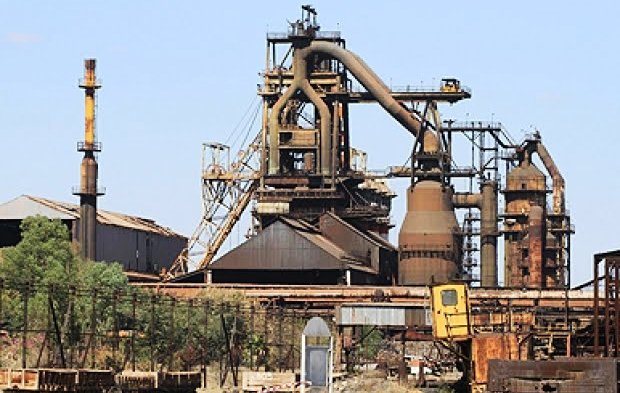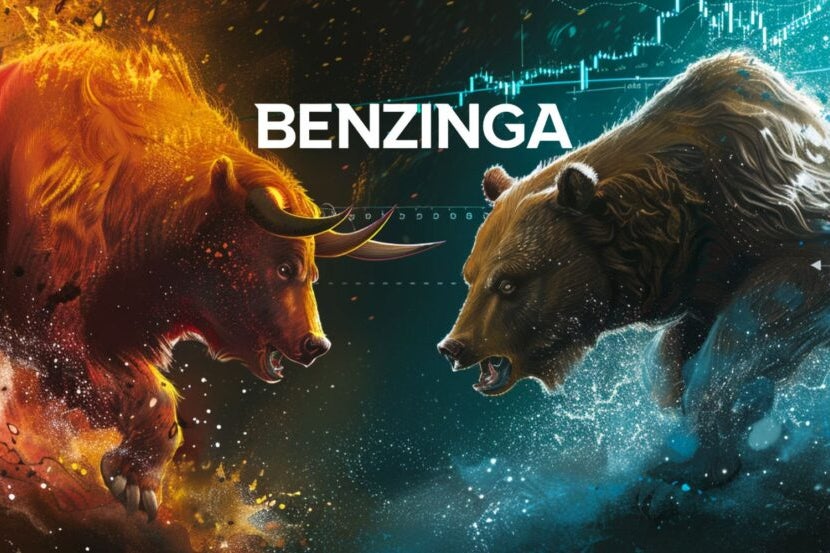- Researchers decode oldest human DNA from South Africa to date
- Evidence tells us voters might be convinced to accept short-term pain for long-term gain—but it will be a hard sell
- From cauldrons to cardigans—the lurking prejudices behind the name 'Granny'
- What is 'dynamic pricing' for concert tickets? It can cost you hundreds of dollars while you queue
- OpenAI's data hunger raises privacy concerns
NEW YORK , Sept. 5, 2024 /PRNewswire/ -- Report with the AI impact on market trends- The global gas separation membrane market size is estimated to grow by USD 841.31 million from 2023-2027, according to Technavio. The market is estimated to grow at a CAGR of about 6.3% during the forecast period. Rising demand for biogas is driving market growth, with a trend towards emergence of new technologies. However, high price of equipment poses a challenge. Key market players include Air Liquide SA, Air Products and Chemicals Inc., Airlane Co. Ltd., Asahi Kasei Corp., DIC Corp., Evonik Industries AG, FUJIFILM Corp., GENERON, KNM Group Berhad, Membrane Technology and Research Inc., Novamem AG, Parker Hannifin Corp., PermSelect Inc., Schlumberger Ltd., SRI International, Ube Corp., Xebec Adsorption Inc., Grasys JSC, Imtex Membranes Corp., and Honeywell International Inc.
AI-Powered Market Evolution Insights. Our comprehensive market report ready with the latest trends, growth opportunities, and strategic analysis- View your snapshot now
Forecast period 2023-2027 Base Year 2022 Historic Data 2017 - 2021 Segment Covered Product (Polyimide and polyamide, Polysulfone, Cellulose acetate, and Others), End-user (Water and waste treatment, Food and beverage, Pharmaceutical, and Others), and Geography (North America, Europe, APAC, Middle East and Africa, and South America) Region Covered North America, Europe, APAC, Middle East and Africa, and South America Key companies profiled Air Liquide SA, Air Products and Chemicals Inc., Airlane Co. Ltd., Asahi Kasei Corp., DIC Corp., Evonik Industries AG, FUJIFILM Corp., GENERON, KNM Group Berhad, Membrane Technology and Research Inc., Novamem AG, Parker Hannifin Corp., PermSelect Inc., Schlumberger Ltd., SRI International, Ube Corp., Xebec Adsorption Inc., Grasys JSC, Imtex Membranes Corp., and Honeywell International Inc
Key Market Trends Fueling Growth
The gas separation membrane market has experienced significant growth in recent years due to the increasing acceptance of membrane technology in various industries. Traditional separation techniques, such as absorption, condensation, cryogenic distillation, and pressure swing absorption, are facing challenges due to rising energy costs and environmental concerns. In response, organizations are seeking innovative solutions to reduce both costs and emissions. Imtex, a leading vendor, is introducing its new membrane technology, Permylene, which focuses on the purification of olefins by separating them from paraffins. Permylene offers substantial cost savings and energy reduction in the olefin-paraffin separation process, as well as environmental benefits. The global gas separation membrane market is expected to grow during the forecast period, driven by the adoption of membrane-based technologies in the petrochemical industry and the need for cost-effective and eco-friendly solutions. Imtex is committed to leading the field of membrane-based olefin-paraffin separation and purification alternatives and collaborating with partners and clients to achieve significant cost and emission reductions.
The Gas Separation Membrane market is experiencing significant growth due to increasing demand in various industries. Nuclear power and oil & gas sectors are major consumers, utilizing membranes for oxygen enrichment and CO2 capture. Operational parameters such as warm temperatures and ambient pressures are key considerations. Organic polymers like polysulfone and ceramic membranes are popular choices. Oxidizing agents and reactants in chemical procedures also drive demand. Oxygen concentrators for medical applications and air purifiers in renewable energy sources are trending. Packing and refrigeration in steel production and water purification applications are other key areas. Stringent policies on CO2 emissions are boosting demand for carbon capture technology. Adsorption processes using alkalis and ammonia are also gaining traction. Argon and other inert gases find use in petrochemical industry and pharma applications. Overall, the market is diverse, with applications ranging from oil & gas to biomedical devices and renewable energy sources.
Insights on how AI is driving innovation, efficiency, and market growth- Request Sample!
Market Challenges
Gas separation membranes, manufactured and sold as equipment by leading companies like Air Products and Chemicals, Air Liquide, and FUJIFILM, come with a high price tag. For instance, a top-tier membrane for nitrogen separation costs between USD3,000 and USD30,000 , while a high-quality oxygen generation membrane can range from USD10,000 to USD100,000 . This significant investment is a major hurdle for the market, particularly in developing countries such as China , India , Malaysia , and Brazil , where labor costs are lower. Consequently, the high cost of gas separation membranes has resulted in minimal demand in these emerging economies, posing a significant challenge for the global market during the forecast period.
and , while a high-quality oxygen generation membrane can range from to . This significant investment is a major hurdle for the market, particularly in developing countries such as , , , and , where labor costs are lower. Consequently, the high cost of gas separation membranes has resulted in minimal demand in these emerging economies, posing a significant challenge for the global market during the forecast period. The Gas Separation Membrane market is experiencing significant growth due to increasing demand for CO2 removal and industrial gas purification. However, challenges persist in commercializing new membranes with improved compaction resistance and energy efficiency. Conventional separation techniques like cryogenic distillation and mineral acids face environmental and economic concerns. Emission reduction targets necessitate the adoption of energy-efficient and environmentally sustainable technologies. High-temperature applications, hydrocarbon separation, and hydrogen recovery are key areas of focus. Industrial settings, including natural gas processing and flue gas treatment, require high-purity oxygen and gaseous nitrogen. Maintenance concerns and material type are crucial factors in membrane selection. Energy consumption and energy security are also important considerations, particularly for greenfield plants and hydroelectric power. Greenhouse gas capture and GHG emissions reduction are regulatory requirements. The Haber process and hybrid processes offer potential solutions for industrial gas production and hydrogen purification.
Insights into how AI is reshaping industries and driving growth- Download a Sample Report
Segment Overview
This gas separation membrane market report extensively covers market segmentation by
Product
1.1 Polyimide and polyamide
1.2 Polysulfone
1.3 Cellulose acetate
1.4 Others
End-user
2.1 Water and waste treatment
2.2 Food and beverage
2.3 Pharmaceutical
2.4 Others
Geography
3.1 North America
3.2 Europe
3.3 APAC
3.4 Middle East and Africa
and 3.5 South America
1.1 Polyimide and polyamide- The Gas Separation Membrane Market is driven by the increasing usage of membrane materials such as polyimide and polyamide. Polyimide, a flexible and lightweight material, is commonly used in the electronics industry and for water purification due to its heat and chemical resistance. In the gas separation industry, its high radiation resistance, non-flammable nature, and stability make it an ideal choice. Polyamide membranes, on the other hand, are known for their low-pressure requirements and flexibility under operating conditions. They are widely used in construction materials and as oxidants for chlorine, chloramine, bromine, and ozone. The growing demand for these materials in various industries is expected to fuel the growth of the Gas Separation Membrane Market during the forecast period.
Download complimentary Sample Report to gain insights into AI's impact on market dynamics, emerging trends, and future opportunities- including forecast (2023-2027) and historic data (2017 - 2021)
Research Analysis
Gas separation membranes are a type of technology used to separate gas mixtures into pure components based on their molecular sizes and affinities to the membrane material. They offer several advantages over conventional separation techniques such as cryogenic distillation and chemical absorption, including energy efficiency and lower emissions. With increasing environmental regulations and emission reduction targets, the demand for gas separation membranes is growing in various industries, including petrochemical and oil & gas, for CO2 removal and hydrogen recovery. Membranes are made of materials like cellulose acetate, polymeric, and ceramic, and are used in nitrogen production, oxygen enrichment, and reactants separation in biomedical devices. The market for gas separation membranes is expected to grow significantly due to the increasing focus on reducing GHG emissions from flue gases and the need for nitrogen generation in various industries.
Market Research Overview
Gas separation membranes are a critical technology used in various industries for the purification and separation of different gases from gas mixtures. These membranes work on the principle of selective permeability, allowing certain gases to pass through while rejecting others based on their molecular size and affinity to the membrane material. Adsorption and membrane processes are two common methods for gas separation. Membranes are used in air quality applications, such as air purifiers, to remove pollutants and improve air quality. In the biomedical devices industry, high-purity oxygen is produced using membrane technology for medical applications. Gas separation membranes are used in carbon dioxide capture processes to reduce CO2 emissions and meet emission reduction targets. Membranes are also used in hydrocarbon separation, natural gas processing, and the production of industrial gases like nitrogen and oxygen. The material type, mechanical properties, and operational parameters of gas separation membranes are crucial factors in their selection for different applications. Ceramic membranes and polymeric membranes, including cellulose acetate and polysulfone, are commonly used. Gas separation membranes are also used in the Haber process for ammonia production, hydrogen purification and recovery, and in various chemical procedures and syntheses. In high-temperature applications, hybrid processes are used to improve energy efficiency and reduce energy consumption. Gas separation membranes are used in various industrial settings, including the oil & gas industry, petrochemical industry, and steel production. They are also used in renewable energy sources like solar power and hydroelectric power. Maintenance concerns, compaction resistance, and energy consumption are important factors in the commercializing new membranes. Environmental sustainability and preservation are becoming increasingly important, with stricter regulations on GHG emissions and a focus on reducing environmental deterioration. Feedstock gases and flue gases are common gas mixtures separated using membrane technology. Gas separation membranes are also used in the production of liquid oxygen and in various chemical absorption and oxidizing agent processes. Gas separation membranes are used in various applications, including hydrogen enrichment, oxygen enrichment, and in the production of gaseous nitrogen and argon. They are also used in the pharma applications and in reverse osmosis processes. In summary, gas separation membranes play a vital role in various industries for the purification and separation of gases. They offer energy efficiency, environmental sustainability, and improved operational parameters compared to conventional separation techniques like cryogenic distillation.
Table of Contents:
1 Executive Summary
2 Market Landscape
3 Market Sizing
4 Historic Market Size
5 Five Forces Analysis
6 Market Segmentation
Product
Polyimide And Polyamide
Polysulfone
Cellulose Acetate
Others
End-user
Water And Waste Treatment
Food And Beverage
Pharmaceutical
Others
Geography
North America
Europe
APAC
Middle East And Africa
South America
7 Customer Landscape
8 Geographic Landscape
9 Drivers, Challenges, and Trends
10 Company Landscape
11 Company Analysis
12 Appendix
About Technavio
Technavio is a leading global technology research and advisory company. Their research and analysis focuses on emerging market trends and provides actionable insights to help businesses identify market opportunities and develop effective strategies to optimize their market positions.
With over 500 specialized analysts, Technavio's report library consists of more than 17,000 reports and counting, covering 800 technologies, spanning across 50 countries. Their client base consists of enterprises of all sizes, including more than 100 Fortune 500 companies. This growing client base relies on Technavio's comprehensive coverage, extensive research, and actionable market insights to identify opportunities in existing and potential markets and assess their competitive positions within changing market scenarios.
Contacts
Technavio Research
Jesse Maida
Media & Marketing Executive
US: +1 844 364 1100
UK: +44 203 893 3200
Email: media@technavio.com
Website: www.technavio.com/
View original content to download multimedia:https://www.prnewswire.com/news-releases/gas-separation-membrane-market-to-grow-by-usd-841-31-million-2023-2027-with-biogas-demand-boost-ai-driven-market-transformation-report---technavio-302239677.html
SOURCE Technavio














